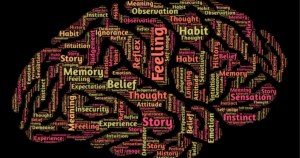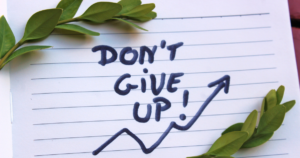In our fast-paced world, it’s easy to get caught up in the whirlwind of daily responsibilities, distractions, and constant busyness. We often find ourselves dwelling on the past or worrying about the future, leaving little room for appreciating the present moment. Mindfulness is a powerful practice that can help you reconnect with the present, reduce stress, and enhance your overall well-being. This guide is designed for beginners who want to explore mindfulness and learn techniques to stay present.
1. Understanding Mindfulness: What It Is and Why It Matters
Mindfulness is the practice of paying full attention to the present moment without judgment. It involves being aware of your thoughts, feelings, and surroundings as they occur, rather than being lost in past regrets or future anxieties. The goal of mindfulness is to cultivate a state of awareness and acceptance, allowing you to experience life more fully and with greater clarity.
Research has shown that mindfulness can have numerous benefits, including:
- Reduced Stress: Mindfulness helps activate the body’s relaxation response, reducing the impact of stress and promoting a sense of calm.
- Improved Focus: By training your mind to stay present, mindfulness enhances your ability to concentrate and perform tasks more efficiently.
- Enhanced Emotional Well-being: Mindfulness fosters emotional resilience by helping you observe your feelings without being overwhelmed by them.
- Better Relationships: Being present and attentive improves communication and empathy, leading to stronger, more fulfilling relationships.
Understanding these benefits can motivate you to incorporate mindfulness into your daily routine and begin experiencing its positive effects.
2. Getting Started with Mindfulness: Simple Techniques for Beginners
Starting a mindfulness practice doesn’t have to be complicated. Here are some simple techniques that beginners can use to begin their journey toward greater presence and awareness:
- Mindful Breathing: One of the most basic and effective mindfulness techniques is mindful breathing. Find a comfortable position, close your eyes, and focus on your breath. Notice the sensation of the air entering and leaving your nostrils, the rise and fall of your chest, and the movement of your abdomen. If your mind starts to wander, gently bring your attention back to your breath.
- Body Scan Meditation: A body scan is a technique that involves paying attention to different parts of your body, noticing any sensations, tension, or discomfort. Start at your toes and slowly work your way up to the top of your head, observing each area with curiosity and without judgment. This practice helps you develop a deeper connection with your body and promotes relaxation.
- Mindful Eating: Eating mindfully involves paying full attention to the experience of eating. Choose a meal or snack and focus on the colors, textures, and flavors of the food. Eat slowly, savoring each bite and noticing how the food makes you feel. Mindful eating can help you develop a healthier relationship with food and increase your awareness of hunger and satiety cues.
- Mindful Walking: Take a walk outside and focus on the experience of walking. Pay attention to the sensation of your feet touching the ground, the movement of your legs, and the rhythm of your steps. Notice your surroundings, such as the sounds, sights, and smells around you. Mindful walking helps you connect with the present moment and provides a gentle form of exercise.
- Five Senses Exercise: This exercise involves tuning into your five senses to ground yourself in the present moment. Take a few minutes to notice one thing you can see, one thing you can hear, one thing you can smell, one thing you can taste, and one thing you can touch. This practice helps you become more aware of your environment and brings your attention back to the here and now.
3. Building a Mindfulness Routine: Incorporating Mindfulness into Daily Life
Incorporating mindfulness into your daily routine can make it easier to maintain a consistent practice. Here are some tips for building a mindfulness routine:
- Start Small: Begin with short mindfulness sessions, such as 5 to 10 minutes a day. As you become more comfortable with the practice, you can gradually increase the duration.
- Choose a Consistent Time: Find a time of day that works best for you to practice mindfulness, whether it’s in the morning, during a lunch break, or before bed. Consistency helps reinforce the habit and makes it easier to stick with it.
- Create a Mindfulness Space: Designate a quiet and comfortable space in your home where you can practice mindfulness. Having a dedicated space can help you establish a routine and make your practice more enjoyable.
- Use Guided Meditations: Guided meditations can be a helpful tool for beginners. There are many apps and online resources that offer guided meditation sessions, which provide instructions and support for your practice.
- Integrate Mindfulness into Daily Activities: Look for opportunities to practice mindfulness throughout your day. For example, you can practice mindful breathing while waiting in line, use mindful eating techniques during meals, or engage in mindful listening during conversations.
4. Overcoming Common Challenges: Tips for Staying on Track
Starting a mindfulness practice can come with its own set of challenges. Here are some common obstacles and tips for overcoming them:
- Mind Wandering: It’s natural for your mind to wander during mindfulness practice. When you notice your thoughts drifting, gently bring your attention back to your breath or the present moment. Be patient with yourself and remember that mindfulness is a skill that takes time to develop.
- Restlessness or Discomfort: You may experience physical discomfort or restlessness when you first start practicing mindfulness. Experiment with different postures and find one that is comfortable for you. If you’re sitting, use a cushion or chair for added support.
- Difficulty Finding Time: It can be challenging to find time for mindfulness in a busy schedule. Start with brief sessions and gradually build up as you find more time. Remember that even a few minutes of mindfulness can have a positive impact.
- Impatience with Progress: Mindfulness is a practice, not a destination. It’s important to be patient and compassionate with yourself. Progress may be slow at times, but every effort you make is a step toward greater awareness and presence.
5. Exploring Advanced Mindfulness Practices: Deepening Your Practice
As you become more comfortable with mindfulness, you may want to explore advanced practices to deepen your experience. Here are a few options to consider:
- Loving-Kindness Meditation (Metta): This practice involves cultivating feelings of compassion and kindness toward yourself and others. Start by silently repeating phrases such as “May I be happy,” “May I be healthy,” and “May I be at ease.” Gradually extend these wishes to others, including loved ones, acquaintances, and even people you find challenging.
- Mindful Journaling: Journaling mindfully involves writing about your thoughts and feelings with awareness and without judgment. This practice can help you gain insights into your emotions, patterns, and experiences.
- Mindful Yoga: Combining mindfulness with yoga can enhance your physical and mental well-being. Mindful yoga focuses on the sensations of each pose, your breath, and the present moment, creating a holistic practice that supports both body and mind.
- Mindfulness Retreats: If you’re looking for a more immersive experience, consider attending a mindfulness retreat. These retreats offer extended periods of practice and guidance from experienced teachers, allowing you to deepen your practice in a supportive environment.
6. Embracing Mindfulness in Everyday Life
Mindfulness is a transformative practice that can enhance your quality of life by bringing your attention to the present moment. As a beginner, start with simple techniques and gradually build a routine that works for you. Remember that mindfulness is not about achieving perfection but about cultivating awareness and acceptance in your daily life.
By incorporating mindfulness into your routine, you can experience greater calm, focus, and emotional resilience. Embrace the journey of mindfulness with curiosity and patience, and allow yourself to grow and evolve through this powerful practice.





